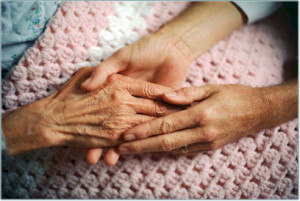>> BY SABINE SCHOENBACH If you are a caregiver for both your children and an aging parent, you know the emotional and financial toll it can take. It may be little comfort to learn that you are not alone. Yet, the “sandwich generation” is rapidly growing, and now more than 1 in 8 Americans is raising a child while also caring for an elderly parent.
BY SABINE SCHOENBACH If you are a caregiver for both your children and an aging parent, you know the emotional and financial toll it can take. It may be little comfort to learn that you are not alone. Yet, the “sandwich generation” is rapidly growing, and now more than 1 in 8 Americans is raising a child while also caring for an elderly parent.
What is not as common, is having a plan for how to manage or finance this care. And it turns out that there isn’t much of a government plan for how we care for an increasingly aging country.
The numbers demonstrating the need for a plan are staggering. Every eight seconds a baby boomer turns 65, and the demographics in North Carolina and across the nation are rapidly shifting. According to the North Carolina Division of Aging and Adult Services, by 2032, over one in four North Carolinians will be age 60 or over. Over the next 20 years, the population over 65 will increase by 77 percent, to 2.4 million.
This demographic shift is happening while many North Carolinians struggle with economic stability. The end of the Great Recession hasn’t felt like a recovery to many families, and without workplace protections for those juggling work and caregiving responsibilities, the options can be daunting.
Considering the fact that the majority of those over 65 will need assistance at some point and that family caregivers are stretched thin and numbers are on the decline, the costs of nursing homes and in-home care will be discussed around many kitchen tables.
Many of our elders will want to stay in their homes, which is also a less expensive option than full-time care in a nursing home. But here’s the glaring gap in making in-home care a reality – the homecare workforce is currently too small to meet the need (our country is projected to need 1.6 million additional direct care workers by 2020) and the caregiving workforce is undervalued.
Not surprisingly, homecare is a female-dominated industry – 9 out of ten direct-care workers are women. And up until very recently, many home care workers have been left out of even basic wage and overtime laws under the Fair Labor Standards Act (FLSA).
There is a >>gender and a race component to these exclusions: Both the Fair Labor Standards Act and the Wagner Act, which protects the rights of workers to organize, excluded domestic and agricultural workers – the majority of whom were African American – in order to get the support of Southern Democrats in the 1930’s. Even when the law was updated in the 1970’s, many domestic workers were considered “companions” and left out of the federal protections.
Not until this year, when the Obama administration >>announced the extension of minimum wage and overtime standards to include domestic service workers, were these exclusions addressed (the changes will go into effect in 2015).
But currently in North Carolina, the median hourly wage of direct-care workers, which include personal care aides and home health aides, remains significantly below the state’s median wage and 43 percent of the direct-care workforce relies on public assistance to make ends meet. Although homecare has become a multi-billion dollar industry, home care workers remain some of the lowest-paid service providers.
As the “age wave” hits our state, more and more members of our community will need quality care – a reality that requires a workforce with quality jobs. Campaigns like the >>National Domestic Workers’ Alliance and >>Caring Across Generations are providing us with a vision for long-term care that addresses the needs of care recipients by looking at the needs of care providers. It’s a plan that could provide quality, dignified care for all of us.
There are no comments
Add yours